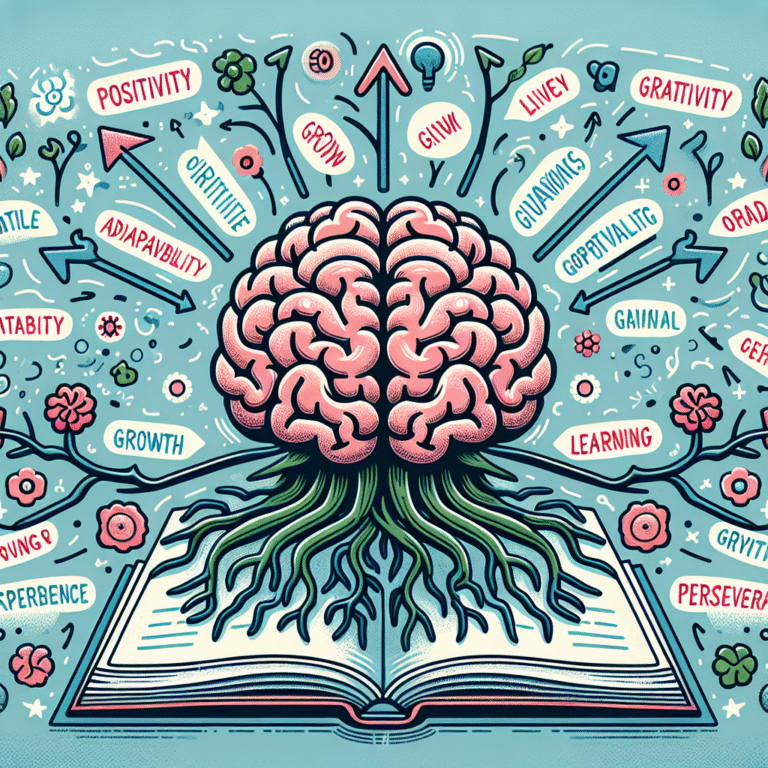
Introduction
In today’s increasingly diverse classrooms, the challenge of meeting the needs of every student has never been more pressing. Educators strive to ensure that all learners can access, engage with, and succeed in their education. Bridging the Gap: Using Assessment for Learning to Support Diverse Learners is a crucial strategy that allows educators to tailor their approaches, pinpoint strengths and weaknesses, and create a more inclusive learning environment. This article delves into innovative assessment techniques that empower teachers to foster growth and understanding among a varied student population.
Understanding the Importance of Assessment for Learning
What is Assessment for Learning?
Assessment for Learning (AfL) refers to assessments specifically designed to inform instruction, focusing on individual student needs rather than merely measuring outcomes. These assessments give teachers ongoing insights into how to support each learner, making it essential for effective teaching in diverse classrooms.
The Role of Diverse Learners
Diverse learners encompass a wide range of backgrounds, abilities, and learning styles. Whether it be based on culture, language, ability, or socio-economic status, these differences significantly influence how students engage with material. Bridging the Gap: Using Assessment for Learning to Support Diverse Learners involves recognizing these unique traits and modifying assessments accordingly.
Case Study: Implementing AfL in a Multilingual Classroom
At Riverside High School, a significant portion of students are English Language Learners (ELLs). The faculty decided to integrate AfL strategies to improve engagement and achievement. They employed formative assessments, such as peer-reviewed presentations and project-based learning, which allowed teachers to gauge language proficiency and content understanding simultaneously. The result was a marked improvement in both language acquisition and subject mastery.
Strategies for Effective Assessment
1. Differentiated Assessments
Differentiation is key when it comes to Bridging the Gap: Using Assessment for Learning to Support Diverse Learners. This means creating assessments that cater to various learning styles and abilities. For example, some students might demonstrate their understanding through written essays, while others might choose to express it through art or oral presentations.
Table 1: Types of Differentiated Assessments
| Assessment Type | Suitable Learning Styles |
|---|---|
| Written Reports | Verbal learners, analytical thinkers |
| Art Projects | Visual learners, creative minds |
| Oral Presentations | Auditory learners, extroverted students |
| Group Projects | Collaborative learners, social interactions |
2. Real-Time Feedback
Providing timely feedback is another essential component of AfL. When students receive quick, constructive input, they can adjust their learning strategies immediately. Implementing digital tools, such as Google Classroom or educational apps, allows teachers to provide instant feedback to students.
Case Study: Real-Time Feedback at Green Valley School
Green Valley School adopted a real-time feedback approach with the help of educational technology. Teachers used tools to share instant assessments and feedback with students, creating a dialogue around learning. Students reported feeling more engaged as they could adjust their efforts based on the feedback provided. The school saw overall improvement in exam scores by 15%.
3. Utilize Formative Assessments
Formative assessments should be interwoven throughout curricula, rather than reserved for unit endings. Frequent low-stakes assessments—quizzes, journal entries, and informal observations—help teachers identify what students understand at any point.
Example: The Exit Ticket Strategy
The “exit ticket” strategy is widely utilized in many classrooms. At the end of a lesson, students write down what they learned or questions they have. This succinct assessment helps instructors gauge students’ understanding effectively. By analyzing these responses, teachers can modify their teaching methods and address concerns, thereby bridging the gap for diverse learners.
Cultivating a Growth Mindset
The Importance of Mindsets in Learning
A growth mindset—the belief that abilities can be developed through hard work and persistence—is vital in education. It encourages students to view challenges as opportunities rather than obstacles.
Incorporating Mindset Principles in Assessment
In practice, educators can design assessments that emphasize growth, such as allowing revisions on assignments or implementing portfolios that track progress over time. This approach supports diverse learners by valuing the learning journey rather than simply the end result.
Case Study: Growth Mindset in Action
At Maplewood School, teachers embraced a growth mindset by allowing mid-term assessments to be retaken. This practice helped students who may have struggled initially to improve their scores. The shift resulted in a 30% decrease in failure rates across diverse student groups, demonstrating the effectiveness of growth-focused assessment methods.
Creating a Supportive Environment
Building Relationships with Students
An essential aspect of Bridging the Gap: Using Assessment for Learning to Support Diverse Learners is developing strong relationships with students. When teachers understand their learners’ backgrounds, interests, and challenges, they can create a more supportive atmosphere.
Strategies for Building Relationships
- Personalized Learning Plans: Create individualized learning plans that cater to each student’s unique needs.
- Frequent Check-Ins: Regularly check in with students to discuss their progress and feelings about learning.
- Peer Mentoring: Pair students with peers for collaborative learning, fostering relationships and promoting peer support.
The Role of Families in Assessment
Engaging Families
Family involvement can significantly enhance student learning outcomes. Educators should seek opportunities to engage families in the assessment process. This can be achieved by sharing assessment methods and results with families and encouraging them to participate in their child’s learning journey.
Case Study: Family Engagement Initiative at Lakeside Academy
Lakeside Academy implemented a Family Engagement Initiative, where families were invited to workshops explaining AfL practices. Parents learned how to support their children at home through formative assessments and regular communication with teachers. This involvement led to higher levels of student motivation and achievement.
Measuring Success
Key Performance Indicators
To effectively assess the success of these strategies, schools should develop Key Performance Indicators (KPIs). These KPIs can include:
- Student Mastery Rates: Percentage of students meeting learning objectives.
- Engagement Levels: Student participation in assessments.
- Parental Involvement Metrics: Attendance rates at family engagement events.
Data Analysis through Charts
Using charts to visualize performance data can help stakeholders identify trends and areas for improvement quickly.
Chart 1: Student Mastery Rates Post-AfL Implementation
| Year | Mastery Rate (%) |
|---|---|
| 2021 | 65 |
| 2022 | 75 |
| 2023 | 83 |
This upward trend indicates the effectiveness of implementing AfL strategies to support diverse learners.
Conclusion
Bridging the Gap: Using Assessment for Learning to Support Diverse Learners is not just an educational imperative—it is a pathway to a more equitable and inclusive educational landscape. By implementing diverse assessment strategies, fostering growth mindsets, building relationships, and engaging families, educators can create classrooms that not only meet the needs of all learners but also inspire them. As we move forward, let us commit to continually refining our approaches, ensuring that no student is left behind.
FAQs
1. What is the difference between Assessment for Learning and Assessment of Learning?
Assessment for Learning focuses on using assessments to inform and enhance teaching and supports student learning. In contrast, Assessment of Learning measures what students have learned at the end of an instructional period.
2. How can I implement formative assessments in my classroom?
Start by incorporating low-stakes assessments like quizzes, exit tickets, and peer reviews regularly to monitor students’ progress and understanding.
3. What are effective ways to engage families in their children’s learning?
Establish communication channels, conduct workshops, and organize family engagement events to educate parents about assessment methods and encourage their participation in their children’s education.
4. How can I ensure that assessments are culturally responsive?
Involve diverse perspectives in developing assessment materials and practices, ensuring that all cultures are represented and respected.
5. Why is a growth mindset essential for diverse learners?
A growth mindset encourages students to embrace challenges, learn from feedback, and view failures as opportunities for growth, which is particularly vital for diverse learners who may face unique hurdles.
By embracing these principles and practices, we can truly bridge the gap and create an environment where all learners thrive.















